Automatic platform adaptations
Learn more about Flutter's platform adaptiveness.
Adaptation philosophy
#In general, two cases of platform adaptiveness exist:
- Things that are behaviors of the OS environment (such as text editing and scrolling) and that would be 'wrong' if a different behavior took place.
-
Things that are conventionally implemented in apps using
the OEM's SDKs (such as using parallel tabs on iOS or
showing an
android.app.AlertDialogon Android).
This article mainly covers the automatic adaptations provided by Flutter in case 1 on Android and iOS.
For case 2, Flutter bundles the means to produce the appropriate effects of the platform conventions but doesn't adapt automatically when app design choices are needed. For a discussion, see issue #8410 and the Material/Cupertino adaptive widget problem definition.
For an example of an app using different information architecture structures on Android and iOS but sharing the same content code, see the platform_design code samples.
Page navigation
#Flutter provides the navigation patterns seen on Android and iOS and also automatically adapts the navigation animation to the current platform.
Navigation transitions
#
On Android, the default Navigator.push()
transition
is modeled after startActivity(),
which generally has one bottom-up animation variant.
On iOS:
-
The default
Navigator.push()API produces an iOS Show/Push style transition that animates from end-to-start depending on the locale's RTL setting. The page behind the new route also parallax-slides in the same direction as in iOS. -
A separate bottom-up transition style exists when
pushing a page route where
PageRoute.fullscreenDialogis true. This represents iOS's Present/Modal style transition and is typically used on fullscreen modal pages.
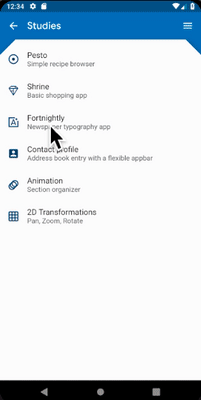
Android page transition
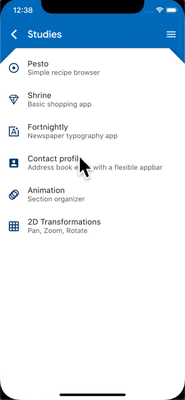
iOS push transition
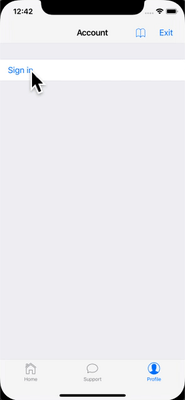
iOS present transition
Platform-specific transition details
#
On Android, Flutter uses the ZoomPageTransitionsBuilder
animation.
When the user taps on an item, the UI zooms in to a screen that features that item.
When the user taps to go back, the UI zooms out to the previous screen.
On iOS when the push style transition is used,
Flutter's bundled CupertinoNavigationBar
and CupertinoSliverNavigationBar
nav bars
automatically animate each subcomponent to its corresponding
subcomponent on the next or previous page's
CupertinoNavigationBar or CupertinoSliverNavigationBar.
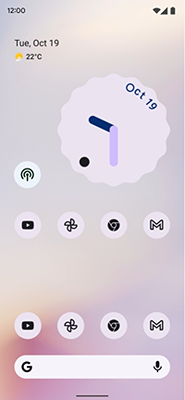
Android
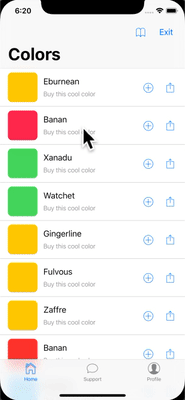
iOS Nav Bar
Back navigation
#
On Android,
the OS back button, by default, is sent to Flutter
and pops the top route of the WidgetsApp's Navigator.
On iOS, an edge swipe gesture can be used to pop the top route.
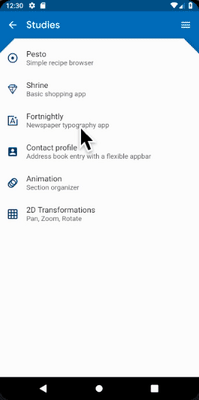
Android back button
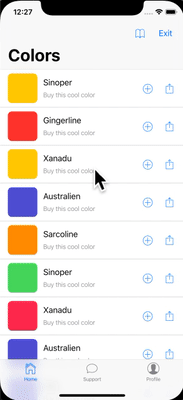
iOS back swipe gesture
Scrolling
#Scrolling is an important part of the platform's look and feel, and Flutter automatically adjusts the scrolling behavior to match the current platform.
Physics simulation
#Android and iOS both have complex scrolling physics simulations that are difficult to describe verbally. Generally, iOS's scrollable has more weight and dynamic friction but Android has more static friction. Therefore iOS gains high speed more gradually but stops less abruptly and is more slippery at slow speeds.
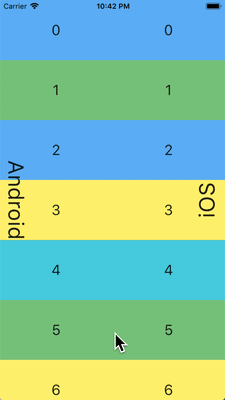
Soft fling comparison
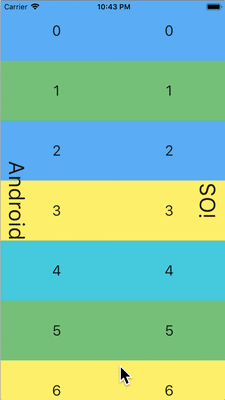
Medium fling comparison
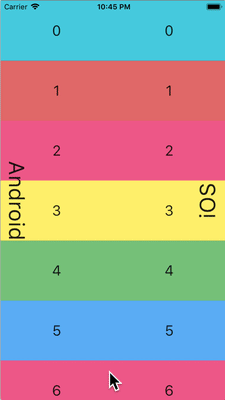
Strong fling comparison
Overscroll behavior
#On Android, scrolling past the edge of a scrollable shows an overscroll glow indicator (based on the color of the current Material theme).
On iOS, scrolling past the edge of a scrollable overscrolls with increasing resistance and snaps back.
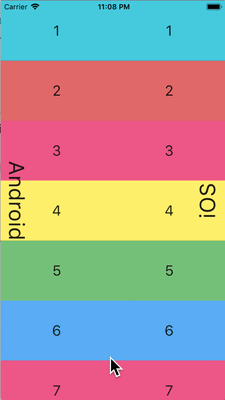
Dynamic overscroll comparison
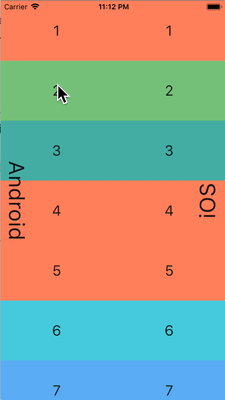
Static overscroll comparison
Momentum
#On iOS, repeated flings in the same direction stacks momentum and builds more speed with each successive fling. There is no equivalent behavior on Android.
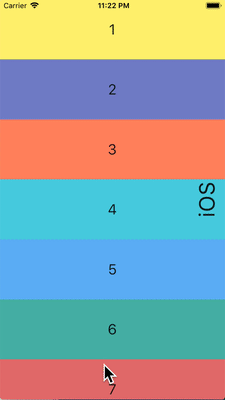
iOS scroll momentum
Return to top
#On iOS, tapping the OS status bar scrolls the primary scroll controller to the top position. There is no equivalent behavior on Android.
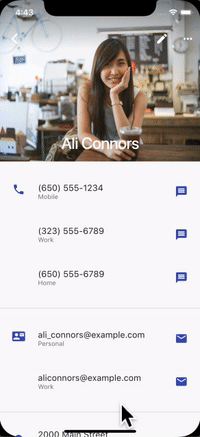
iOS status bar tap to top
Typography
#When using the Material package, the typography automatically defaults to the font family appropriate for the platform. Android uses the Roboto font. iOS uses the San Francisco font.
When using the Cupertino package, the default theme uses the San Francisco font.
The San Francisco font license limits its usage to software running on iOS, macOS, or tvOS only. Therefore a fallback font is used when running on Android if the platform is debug-overridden to iOS or the default Cupertino theme is used.
You might choose to adapt the text styling of Material widgets to match the default text styling on iOS. You can see widget-specific examples in the UI Component section.
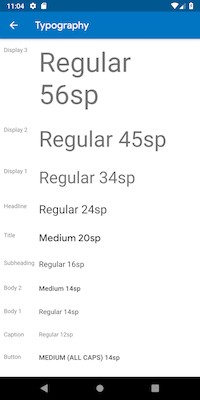
Roboto on Android
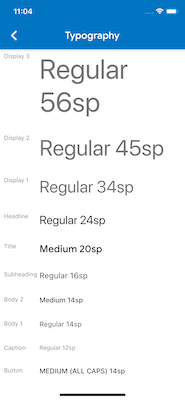
San Francisco on iOS
Iconography
#When using the Material package, certain icons automatically show different graphics depending on the platform. For instance, the overflow button's three dots are horizontal on iOS and vertical on Android. The back button is a simple chevron on iOS and has a stem/shaft on Android.

Icons on Android

Icons on iOS
The material library also provides a set of
platform-adaptive icons through Icons.adaptive.
Haptic feedback
#The Material and Cupertino packages automatically trigger the platform appropriate haptic feedback in certain scenarios.
For instance, a word selection via text field long-press triggers a 'buzz' vibrate on Android and not on iOS.
Scrolling through picker items on iOS triggers a 'light impact' knock and no feedback on Android.
Text editing
#Both the Material and Cupertino Text Input fields support spellcheck and adapt to use the proper spellcheck configuration for the platform, and the proper spell check menu and highlight colors.
Flutter also makes the below adaptations while editing the content of text fields to match the current platform.
Keyboard gesture navigation
#On Android, horizontal swipes can be made on the soft keyboard's space key to move the cursor in Material and Cupertino text fields.
On iOS devices with 3D Touch capabilities, a force-press-drag gesture could be made on the soft keyboard to move the cursor in 2D via a floating cursor. This works on both Material and Cupertino text fields.
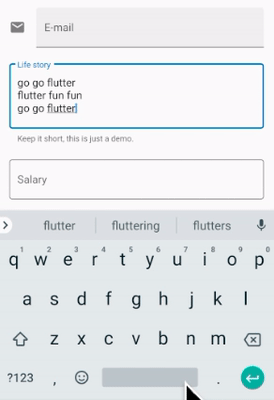
Android space key cursor move
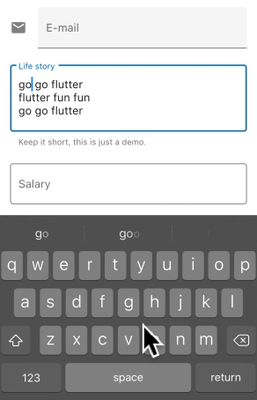
iOS 3D Touch drag cursor move
Text selection toolbar
#With Material on Android, the Android style selection toolbar is shown when a text selection is made in a text field.
With Material on iOS or when using Cupertino, the iOS style selection toolbar is shown when a text selection is made in a text field.
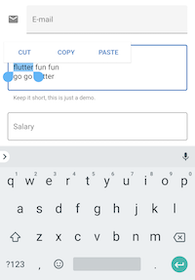
Android text selection toolbar

iOS text selection toolbar
Single tap gesture
#With Material on Android, a single tap in a text field puts the cursor at the location of the tap.
A collapsed text selection also shows a draggable handle to subsequently move the cursor.
With Material on iOS or when using Cupertino, a single tap in a text field puts the cursor at the nearest edge of the word tapped.
Collapsed text selections don't have draggable handles on iOS.
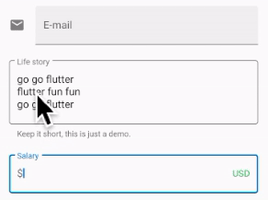
Android tap
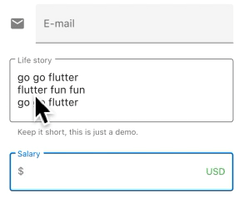
iOS tap
Long-press gesture
#With Material on Android, a long press selects the word under the long press. The selection toolbar is shown upon release.
With Material on iOS or when using Cupertino, a long press places the cursor at the location of the long press. The selection toolbar is shown upon release.
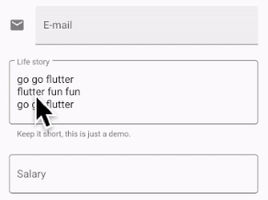
Android long press
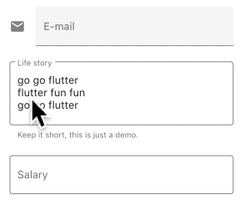
iOS long press
Long-press drag gesture
#With Material on Android, dragging while holding the long press expands the words selected.
With Material on iOS or when using Cupertino, dragging while holding the long press moves the cursor.
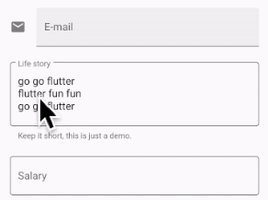
Android long-press drag
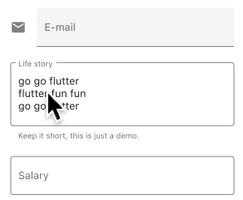
iOS long-press drag
Double tap gesture
#On both Android and iOS, a double tap selects the word receiving the double tap and shows the selection toolbar.
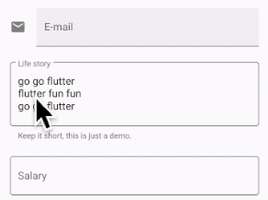
Android double tap
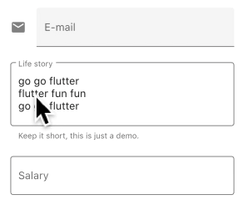
iOS double tap
UI components
#This section includes preliminary recommendations on how to adapt Material widgets to deliver a natural and compelling experience on iOS. Your feedback is welcomed on issue #8427.
Widgets with .adaptive() constructors
#
Several widgets support .adaptive() constructors.
The following table lists these widgets.
Adaptive constructors substitute the corresponding Cupertino components
when the app is run on an iOS device.
Widgets in the following table are used primarily for input, selection, and to display system information. Because these controls are tightly integrated with the operating system, users have been trained to recognize and respond to them. Therefore, we recommend that you follow platform conventions.
| Material widget | Cupertino widget | Adaptive constructor |
|---|---|---|
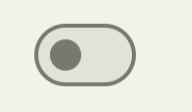
Switch
|

CupertinoSwitch
|
Switch.adaptive()
|
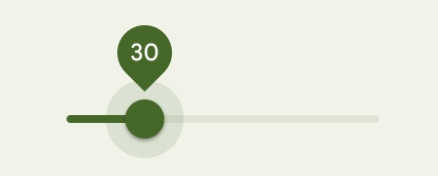
Slider
|

CupertinoSlider
|
Slider.adaptive()
|
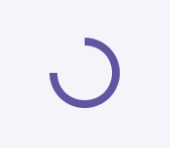
CircularProgressIndicator
|

CupertinoActivityIndicator
|
CircularProgressIndicator.adaptive()
|
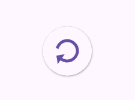
RefreshProgressIndicator
|

CupertinoActivityIndicator
|
RefreshIndicator.adaptive()
|
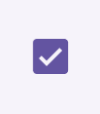
Checkbox
|

CupertinoCheckbox
|
Checkbox.adaptive()
|

Radio
|

CupertinoRadio
|
Radio.adaptive()
|
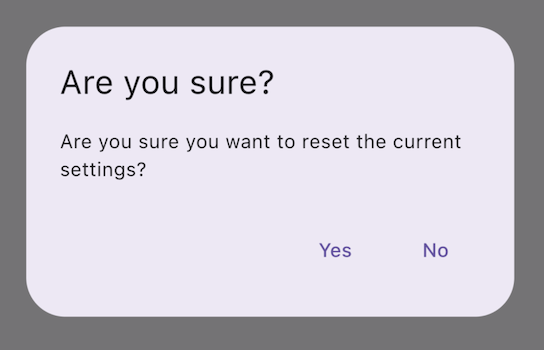
AlertDialog
|
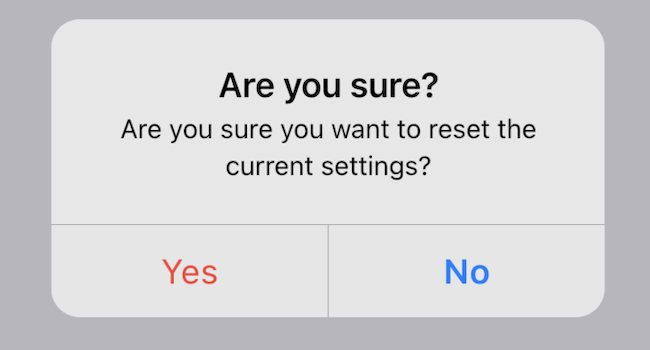
CupertinoAlertDialog
|
AlertDialog.adaptive()
|
Top app bar and navigation bar
#Since Android 12, the default UI for top app bars follows the design guidelines defined in Material 3. On iOS, an equivalent component called "Navigation Bars" is defined in Apple's Human Interface Guidelines (HIG).
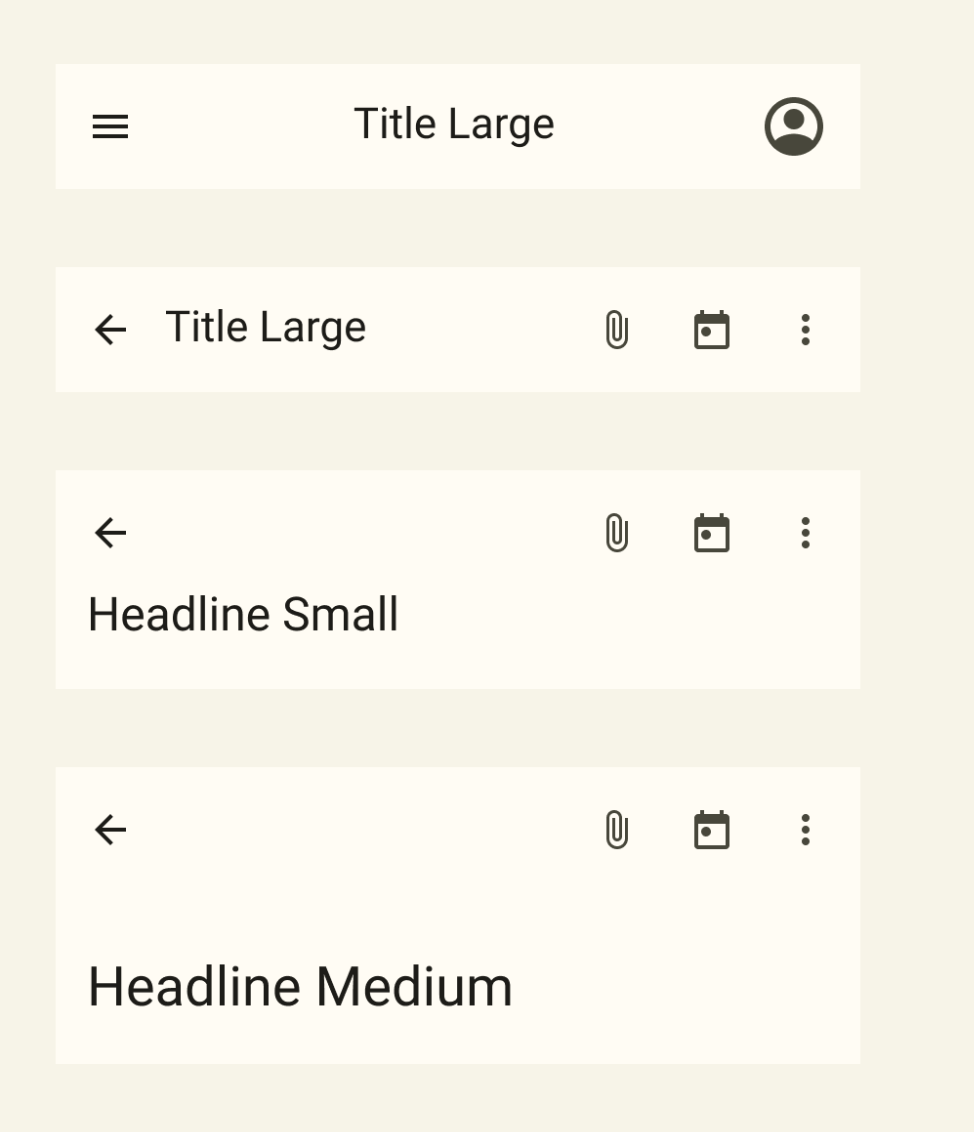
Top App Bar in Material 3
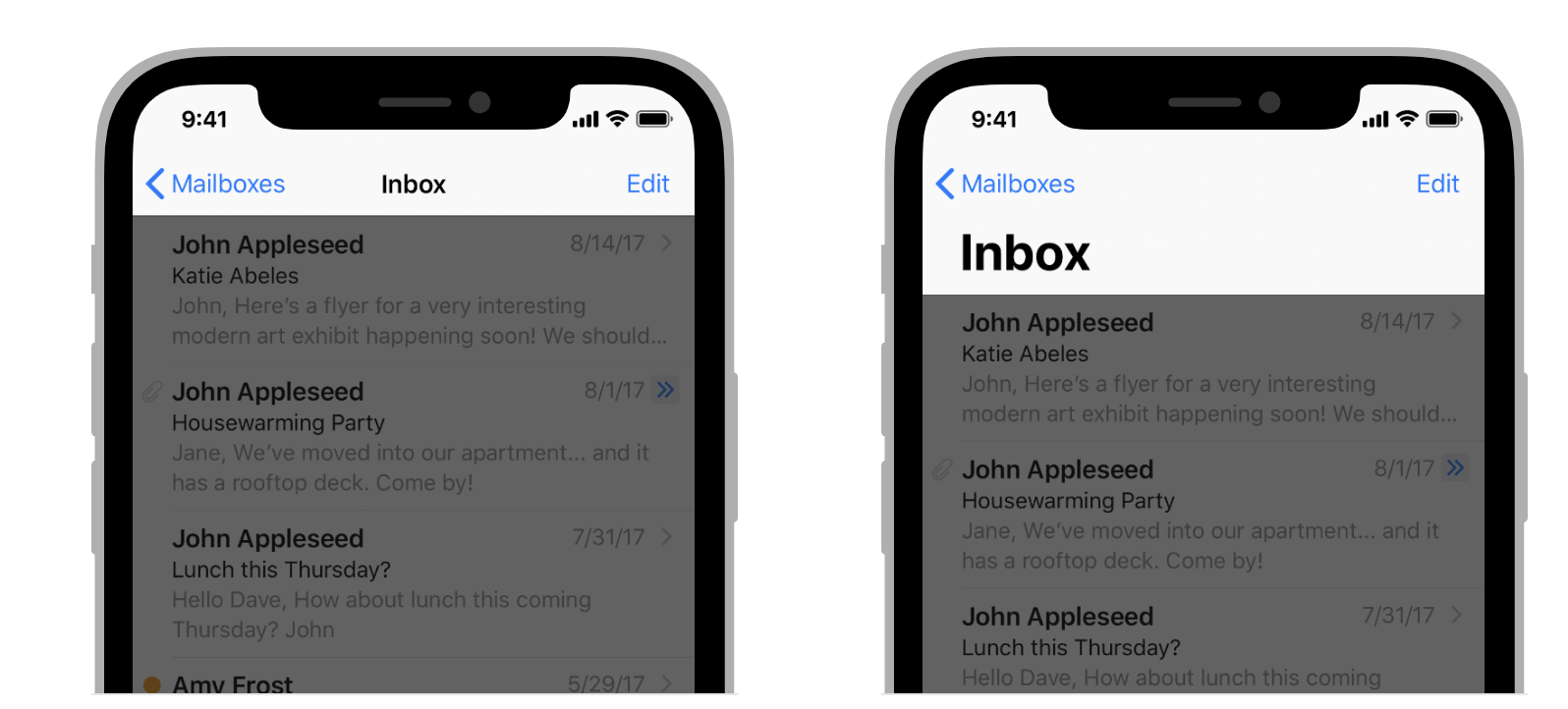
Navigation Bar in Human Interface Guidelines
Certain properties of app bars in Flutter apps should be adapted,
like system icons and page transitions.
These are already automatically adapted when using
the Material AppBar and SliverAppBar widgets.
You can also further customize the properties of these widgets to better
match iOS platform styles, as shown below.
// Map the text theme to iOS styles
TextTheme cupertinoTextTheme = TextTheme(
headlineMedium: CupertinoThemeData()
.textTheme
.navLargeTitleTextStyle
// fixes a small bug with spacing
.copyWith(letterSpacing: -1.5),
titleLarge: CupertinoThemeData().textTheme.navTitleTextStyle)
...
// Use iOS text theme on iOS devices
ThemeData(
textTheme: Platform.isIOS ? cupertinoTextTheme : null,
...
)
...
// Modify AppBar properties
AppBar(
surfaceTintColor: Platform.isIOS ? Colors.transparent : null,
shadowColor: Platform.isIOS ? CupertinoColors.darkBackgroundGray : null,
scrolledUnderElevation: Platform.isIOS ? .1 : null,
toolbarHeight: Platform.isIOS ? 44 : null,
...
),
But, because app bars are displayed alongside other content in your page, it's only recommended to adapt the styling so long as it's cohesive with the rest of your application. You can see additional code samples and a further explanation in the GitHub discussion on app bar adaptations.
Bottom navigation bars
#Since Android 12, the default UI for bottom navigation bars follow the design guidelines defined in Material 3. On iOS, an equivalent component called "Tab Bars" is defined in Apple's Human Interface Guidelines (HIG).

Bottom Navigation Bar in Material 3
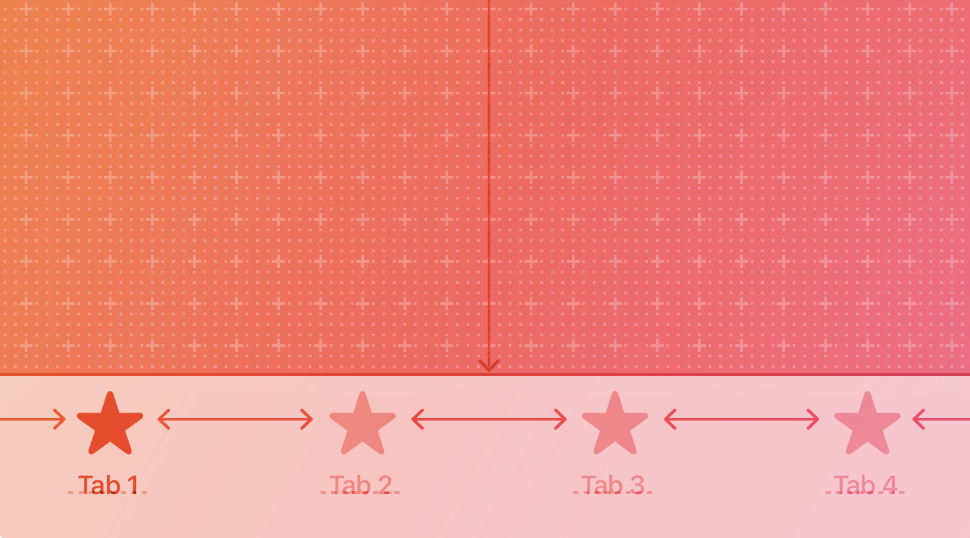
Tab Bar in Human Interface Guidelines
Since tab bars are persistent across your app, they should match your own branding. However, if you choose to use Material's default styling on Android, you might consider adapting to the default iOS tab bars.
To implement platform-specific bottom navigation bars,
you can use Flutter's NavigationBar widget on Android
and the CupertinoTabBar widget on iOS.
Below is a code snippet you can
adapt to show a platform-specific navigation bars.
final Map<String, Icon> _navigationItems = {
'Menu': Platform.isIOS ? Icon(CupertinoIcons.house_fill) : Icon(Icons.home),
'Order': Icon(Icons.adaptive.share),
};
...
Scaffold(
body: _currentWidget,
bottomNavigationBar: Platform.isIOS
? CupertinoTabBar(
currentIndex: _currentIndex,
onTap: (index) {
setState(() => _currentIndex = index);
_loadScreen();
},
items: _navigationItems.entries
.map<BottomNavigationBarItem>(
(entry) => BottomNavigationBarItem(
icon: entry.value,
label: entry.key,
))
.toList(),
)
: NavigationBar(
selectedIndex: _currentIndex,
onDestinationSelected: (index) {
setState(() => _currentIndex = index);
_loadScreen();
},
destinations: _navigationItems.entries
.map<Widget>((entry) => NavigationDestination(
icon: entry.value,
label: entry.key,
))
.toList(),
));
Text fields
#Since Android 12, text fields follow the Material 3 (M3) design guidelines. On iOS, Apple's Human Interface Guidelines (HIG) define an equivalent component.
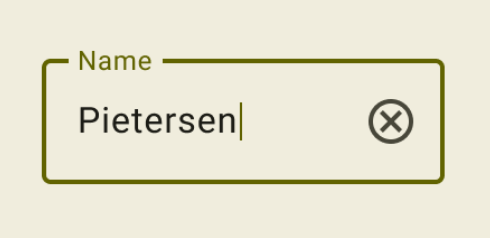
Text Field in Material 3

Text Field in HIG
Since text fields require user input, their design should follow platform conventions.
To implement a platform-specific TextField
in Flutter, you can adapt the styling of the
Material TextField.
Widget _createAdaptiveTextField() {
final _border = OutlineInputBorder(
borderSide: BorderSide(color: CupertinoColors.lightBackgroundGray),
);
final iOSDecoration = InputDecoration(
border: _border,
enabledBorder: _border,
focusedBorder: _border,
filled: true,
fillColor: CupertinoColors.white,
hoverColor: CupertinoColors.white,
contentPadding: EdgeInsets.fromLTRB(10, 0, 0, 0),
);
return Platform.isIOS
? SizedBox(
height: 36.0,
child: TextField(
decoration: iOSDecoration,
),
)
: TextField();
}
To learn more about adapting text fields, check out the GitHub discussion on text fields. You can leave feedback or ask questions in the discussion.
Unless stated otherwise, the documentation on this site reflects Flutter 3.38.1. Page last updated on 2025-10-28. View source or report an issue.